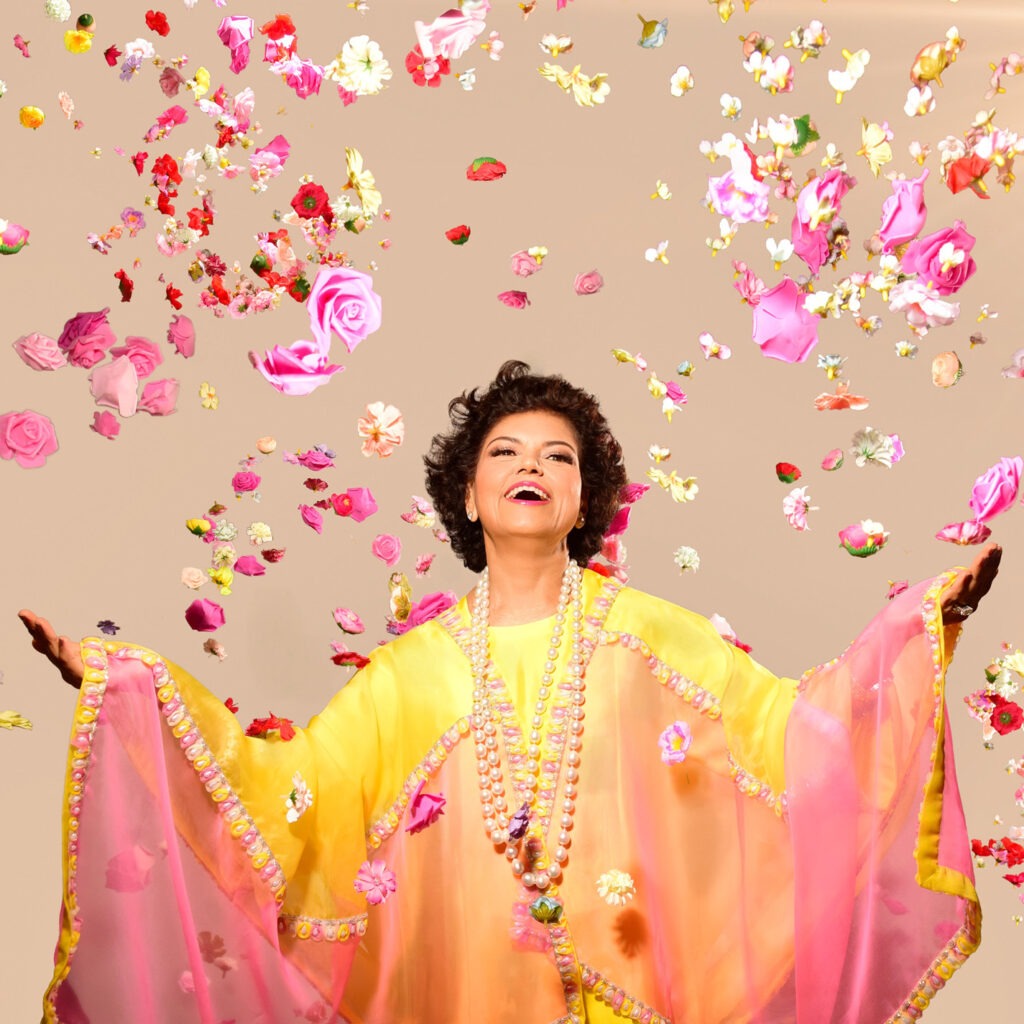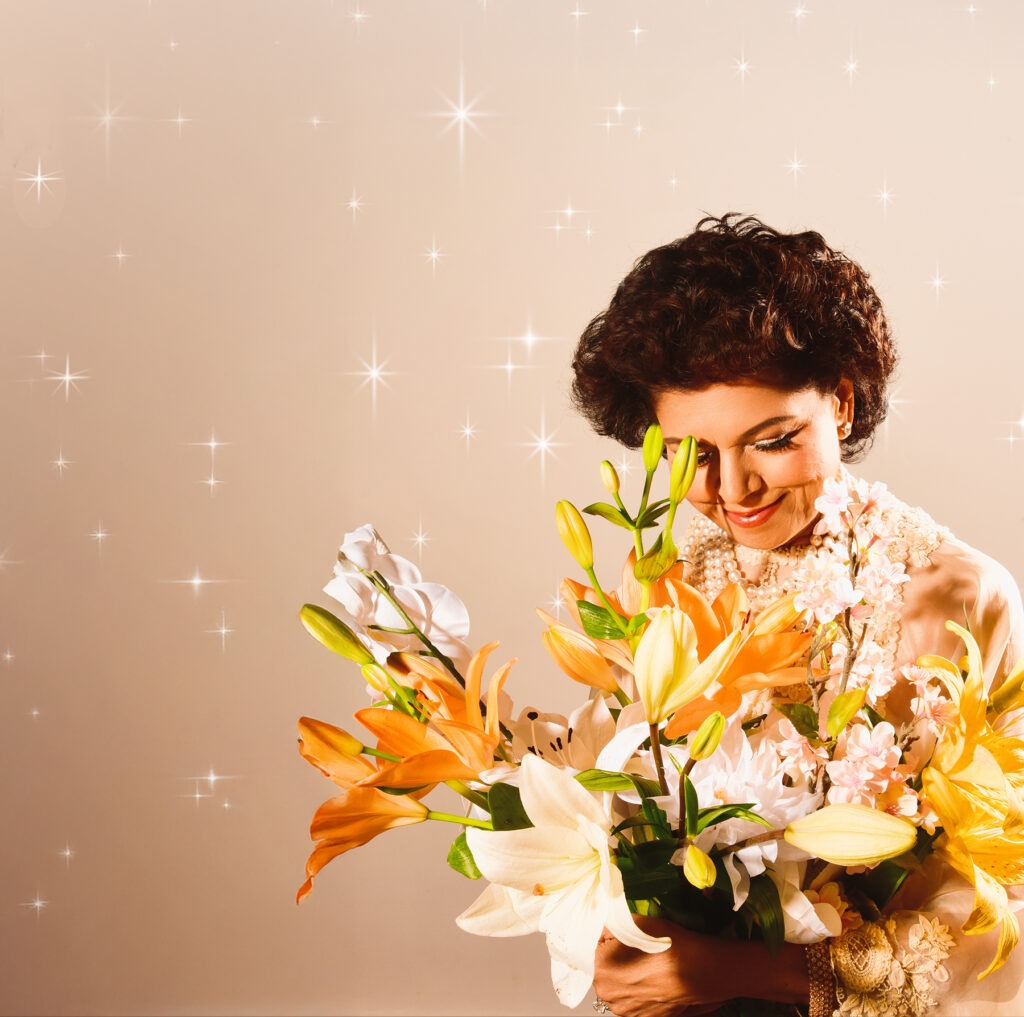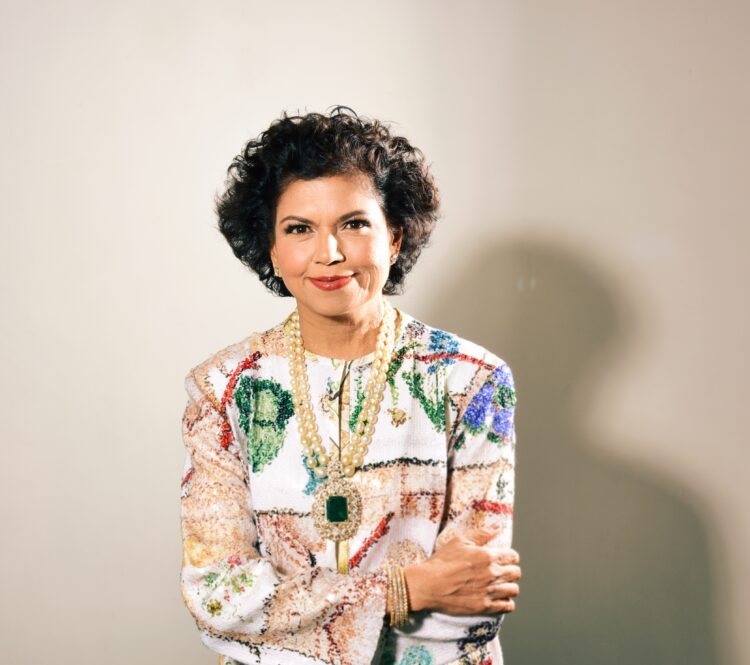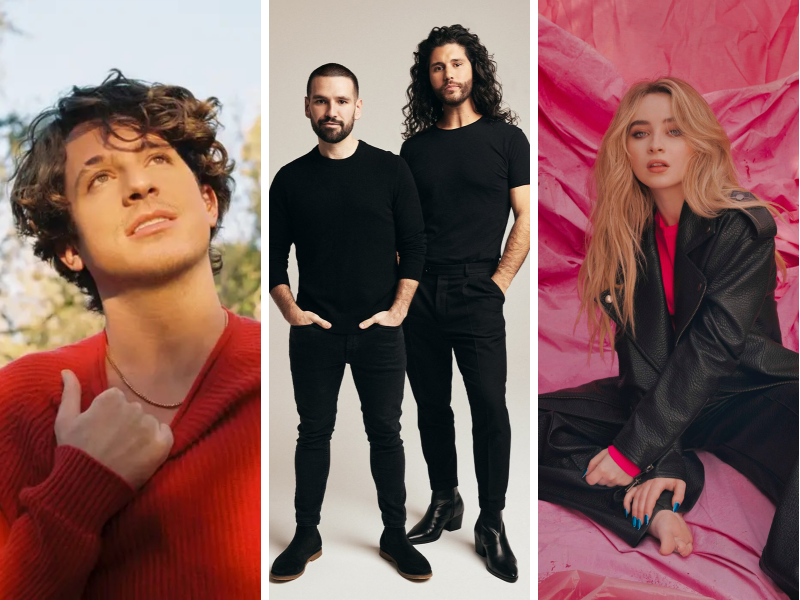Few artists move through the world with the serenity, purpose, and radiant light that Chandrika Tandon does.
A powerhouse in business, a devoted philanthropist, and a GRAMMY Award-winning musician, Tandon’s work always circles back to one mission: elevating human happiness. With the release of her newest album Soul Ecstasy, she delivers her most joyous and spiritually charged offering yet — a hypnotic fusion of ragas, ancient chants, and global instrumentation crafted to guide listeners toward their own inner bliss.
“It is from within that inner space that I have been able to feel true ecstasy,” she tells Celeb Secrets in our exclusive conversation. “And I wanted to share that.”
Recorded between New York and India with more than 75 virtuoso musicians, Soul Ecstasy is the culmination of decades of training, meditation, exploration, and deep emotional intention. But it’s also a celebration that arrives on the heels of Tandon’s first GRAMMY win earlier this year at age 70, marking a milestone that further cements her artistry as timeless and boundary-defying.
From ecstatic chanting to communal singing, from neuroscience to spiritual practice, Tandon opens up to Celeb Secrets about the album, her mission, and what she believes music can give back to the world. Keep scrolling to see our full Q&A with an extraordinary woman whose voice — in every sense — continues to be a source of light, love, and healing and don’t forget to let us know if you’re loving Soul Ecstasy by either leaving a reaction at the bottom of the post or by sliding into our DMs on Instagram at @celebsecrets.
Celeb Secrets: “Soul Ecstasy” feels like a radiant blend of energy, spirituality, and musical mastery. What was the spark that ignited this album and what do you hope listeners feel when they first press play?
Chandrika Tandon: “The title says it all — ecstasy!
I have practiced meditation for many years, and as we go into a place of deep meditation, we experience a profound silence, a sense of peace, and also bubbles of joy. That bubbling is what inspired this album and guided its composition. It is from within that inner space that I have been able to feel true ecstasy and a sense of love for the whole planet, and I wanted to share that.”
CS: You’ve described this project as “an invitation into joy.” What does joy sound like to you, and how did you translate that feeling into music?
CT: “When in a state of joy, we have many different rhythms that play in our heads. On the one hand, there is a very inviting silence. On the other hand, there are pulsating rhythms. Through all of this is a set of syllables, of words, that have resonance.
The words ‘Hare Rama, Hare Krishna,’ known as the Maha Mantra, have always been connected with ecstatic chanting, making it perfect for this album. The words Hare Rama, Hare Krishna mean “let the light within me shine, and let me feel an attraction to the divine.” It is from this space that we feel drawn to a higher power, and that connection multiplies our joy.”
CS: You’ve called this album more“high-energy” than your past work. What inspired you to lean into that livelier, more communal sound this time around?
CT: “I have worked extensively with communal sounds, from leading a Community Choir for seniors to working with the Young People’s Chorus of New York City to performing with choirs of all sizes across the world. I believe in the power of collective singing, like with the Sufi traditions and the Nama Sankirtan traditions of India, because the emotions are multiplied manifold when we sing in a group. I wanted to explore that much more intentionally with this album.”
CS: From Soul Call to your Grammy-winning Triveni, and now Soul Ecstasy, it feels like each album mirrors a new chapter of your spiritual and musical evolution. What makes this one your most personal yet?
CT: “Inspiration for my albums come from two places. One is my deepest meditations, where I am guided, and the other is the arrangements that reflect my current state of mind. This album reflects where I am at this very moment, and I was guided to create the album in my meditation.”
CS: You’ve worked with over 75 musicians across India and the U.S. How did that global collaboration shape the album’s spirit and sound?
CT: “For Soul Ecstasy, I worked again with my long-time collaborator, the amazing sarod maestro Tejendra Narayan Majumdar. Each of the musicians we brought onto the album was classically trained and individually exceptional, but India does not have a choral tradition. Trying to forge a collective sound with many maestras and maestros was a very exciting journey unto itself. We also had instrumental soloists of flute, sarangi, esraj, and others, each showing their own mastery. This album brought together multiple artists, hearts, and musical souls.”

CS: You’ve brought ancient Indian chants and classical ragas into the global spotlight and made them feel fresh and accessible. What’s your secret to bridging timeless tradition with modern resonance?
CT: “I’ve spent over three decades studying ragas and Sanskrit chants with the world’s greatest masters, and I feel like I am still scratching the surface. One of the challenges is that they are very complex, sophisticated systems that require extraordinary virtuosity to truly master. Sharing my music is not about exhibiting my artistry but rather to make these ragas more accessible, so that everyone has a hummable tune and song they can sing on their own. My wish is that everyone will be able to enjoy and participate in these songs in their own living rooms.”
CS: The fusion of Indian instruments with Western elements like Spanish guitar and piano gives Soul Ecstasy such a universal touch. How do you balance authenticity with innovation?
CT: “To me, the authenticity comes in keeping the interpretation of the ragas at pristine levels. I only add piano, guitar, or other Western instruments in ragas that lend themselves to an easy crossover. I have explored this extensively, having spent the last four decades in the Western music world, even as I studied Indian music. I can’t help but feel these musical connections in very visceral, organic ways.
For example, Kiravani is a raga that has been widely used in the Spanish tradition. So, in Canto Divino, I brought that connection into vivid focus using a guitar, a whistle flute, and Spanish drumming. In my previous album Shivoham – The Quest, I brought Gregorian chants together with the Dorian Scale and the raga Bhimpalasi.
Musical styles and traditions are not as pigeonholed as one might imagine, and it’s very interesting to make and discuss these connections. We musicians have only seen the tip of this iceberg, and there are so many new perspectives to explore, which will be an integral part of my continued musical journey.”
CS: You often speak about elevating human happiness through music and education. What does “ecstasy” mean to you beyond the title and how do you personally tap into that inner bliss?
CT: “Reconnecting with music took me on a journey to discovering my inner silence and my inner happiness, which then led me to service. Music played a critical role in finding, healing, and empowering myself. For the last twenty years I have signed everything ‘Love Light Laughter’ because my goal is to always operate from that space (even though I am not there all the time). My wish is for all beings on the planet to also live in that mindset. If we could all do that, we would make the planet much more beautiful and peaceful.
We are finding, more and more, that music is medicine, a natural resource that can be used to cure diseases and improve the state of the world. My mission is to create emotional empowerment for all, to help as many people benefit from the power of music, just as I have.”
CS: In today’s fast-paced world, how can music like yours help people slow down and reconnect with themselves?
CT: “I was recently on a panel with scientists, and we discussed how there is a growing body of scientific evidence showing that music has measurable impacts on the mind at every level and at every age, from babies in the womb to pregnant mothers releasing oxytocin to those with Alzheimer’s. Indian music traditions actually have specific kinds of music prescribed for relieving depression, lowering anxiety, improving sleep, and providing many other benefits. Microtonal music also has very poignant neurological and physiological impacts, which are just now beginning to be studied and documented. Clearly, much more research needs to be done, but I have seen all this in action, having received thousands of emails over the years from people who have shared stories of healing and immense changes, in themselves or their loved ones, from listening to my albums. I know these stories are anecdotal, but I also know there is more to them than meets the eye. This is a frontier we need to explore with real intention and from all angles!”
CS: Earlier this year, you took home your first GRAMMY at 70 — such a powerful milestone. How did that moment feel, and what message do you hope it sends to other creatives chasing their dreams at any age?
CT: “Age is just a number, as they say. I went back seriously to music later in life. So, while it was incredible to win a Grammy at that age, the more important thing to me is that it gave Triveni a much wider platform, enabling many more people to experience the healing power of the music.
The message that I offer to everyone — and myself — is to do what you love with purity of purpose. Don’t strive for awards or fame. Do it because you have a passion that won’t allow you to not do it. Whatever comes or doesn’t come is perfectly fine. Rewards are not the end goal. The journey itself is what will satisfy your soul.”

CS: You’ve broken barriers as the first Indian-American woman partner at McKinsey and continue to uplift others through your foundation and NYU’s Tandon School of Engineering. How do all these parts of your life connect to your artistry?
CT: “The dual pillars of focus at this moment in my life are promoting economic empowerment through education — with a particular focus on STEM — and emotional empowerment through music and other forms of wellness techniques. You cannot talk about emotional empowerment if people are unable to meet their most basic economic needs. Ensuring that people have jobs and livelihoods is critical. Similarly, having all the money in the world does not guarantee that you will be happy. Both sides must be nourished and cherished.”
CS: You’ve spoken about music as a beautiful offering to the world. What would you say this particular offering is giving back to humanity right now?
CT: “Music is love, music ignites the light in us in our darkest moments, and music brings us untold moments of bliss and laughter. Music is Love Light Laughter. My prayer, for myself and the whole world, is that whatever our circumstance we are able to repose in that Love Light Laughter as much of the time as we can. It would make for a happier planet and happier human beings.”
CS: You have upcoming live performances and immersive events… what can audiences expect from those experiences? Is there a moment you’re most excited to share on stage?
CT: “My concerts are an invitation to participate rather than simply spectate. I hope everyone comes with a desire to join me on a journey of experiencing the most ecstatic part of themselves through storytelling, meditation, and communal singing. I also hope they will carry the songs in their hearts and on their lips long after they leave the concert.”
CS: When you look back at everything you’ve achieved — and forward to what’s next — what does true fulfillment look like for Chandrika Tandon today?
CT: “For me, true fulfillment is being able to say that you have no regrets in the life you lead. I have many ideas of things I still want to do, like continuing my journey with communal and choral singing and keeping my feet planted in Sanskrit chants, but I honestly do not look too far ahead. Instead, I focus on getting through one thing at a time and truly enjoying the journey.”
CS: What’s one “Celeb Secret” about the making of this album that fans would be surprised to learn?
CT: “I start every recording session, every rehearsal, every concert, every musical event with a short inward prayer inviting all the masters, gurus, and forms of the divine to join me in those moments. I have always done this ritual before everything that I do.”








